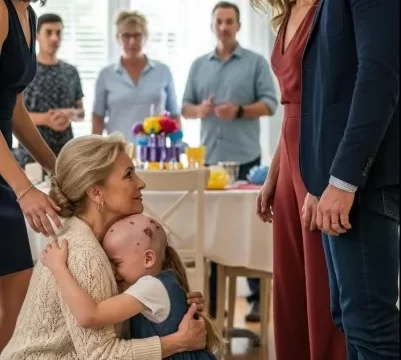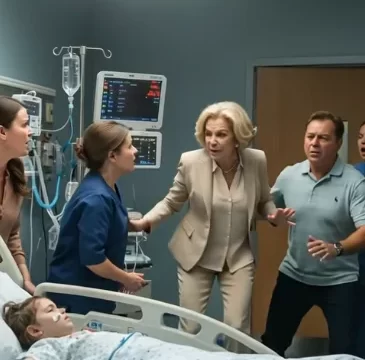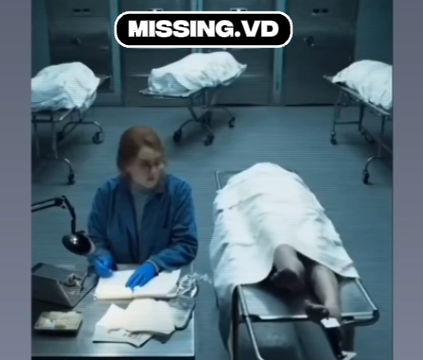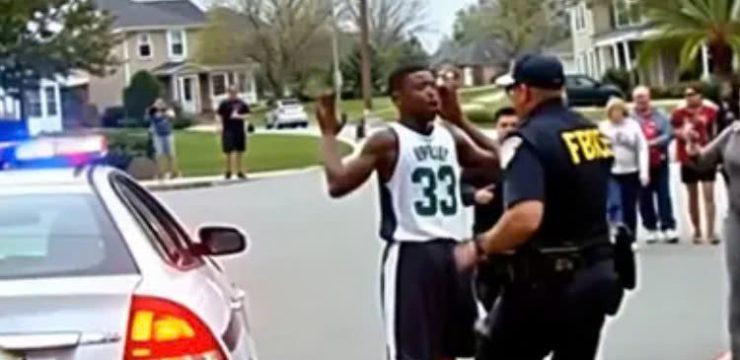The quiet calm of a suburban neighborhood was shattered by the distant echo of sirens slicing through the night. Inside a dimly lit home, two police officers stood hesitating at the doorway, their instincts warning that something unimaginable awaited them. What began as a routine emergency call had quickly turned into a scene that would haunt them for years. On the other end of the phone had been a trembling child’s voice—small, frightened, yet composed enough to say words no one ever wants to hear. As the officers crossed the threshold, a chill of foreboding filled the air, heavy and still.
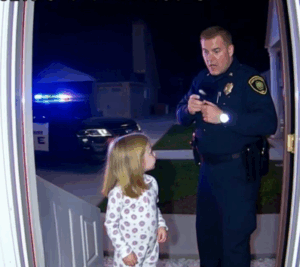
The silence inside was unnerving. The creak of the floorboards under their boots seemed too loud, their flashlight beams cutting through the shadows that seemed to move even when nothing did. Something was deeply wrong. And then they found it—a bedroom door ajar, the dim light revealing two motionless bodies lying side by side. A man and a woman. Their hands were loosely clasped, faces peaceful, as though asleep. But the stillness was unnatural. One officer knelt beside the bed, his voice soft yet trembling. “Sir, ma’am—can you hear me?” There was no reply. He reached for a pulse, his trained fingers moving swiftly, though his expression told the truth before his words did. They were gone. The silence that followed pressed against their ears, suffocating and absolute.
Minutes earlier, dispatchers had received the most chilling of calls. “My mommy and daddy won’t wake up,” a little girl had said in a steady yet heartbreakingly small voice. “They’re sleeping, but something’s wrong.” The dispatcher’s tone softened instantly, trying to calm her while officers were sent racing to the address. Her name was Lily—just seven years old—and by picking up that phone, she had already shown more courage than most adults could muster in a lifetime.
When the officers turned back toward the living room, they found her standing there. She was clutching a small stuffed bear so tightly that her knuckles had turned white. Her eyes—wide, uncertain, but dry—flicked between the officers and the hallway where her parents lay. She didn’t cry. She didn’t move. She simply stood frozen, her small world collapsing around her. One of the officers, lowering himself to her level, spoke softly. “Hey, Lily,” he said gently. “You did the right thing. You were really brave to call us, sweetheart. We’re going to take care of you now, okay?” She gave a tiny nod, trembling, and allowed them to guide her toward the couch.
They switched on a lamp, filling the room with a soft glow. To distract her from what she had seen, one officer asked simple questions—about her favorite color, her school, her pet goldfish. She answered quietly, her voice steady, though her eyes betrayed the confusion of a child trying to make sense of the impossible.
Piece by piece, the story unfolded. After dinner, her parents had tucked her in, reading her favorite bedtime story before turning out the light. Everything had been normal. Later, when she woke from a nightmare, she went to their room for comfort. She whispered their names, nudged their arms, but they didn’t respond. At first, she thought they were pretending or asleep, but when she couldn’t wake them, her fear grew. She remembered what her teacher once said—“If something bad happens, call 911”—and so she did, her small hands steady as she spoke to the dispatcher.
When the paramedics arrived, their grim expressions confirmed the officers’ worst fears. The parents were gone. Investigators moved methodically through the house, photographing everything: the half-open window, a coffee cup on the nightstand, the phone resting on the dresser. Nothing seemed out of place. Outside, neighbors whispered behind yellow police tape, trying to make sense of what could have happened in such a peaceful home.
Detectives later confirmed there were no signs of forced entry, no evidence of a struggle, no theft—just a family home frozen in time. The unanswered questions deepened the tragedy, but amid the chaos, one truth stood clear: Lily was safe. That single fact mattered more than anything.
As the night stretched toward dawn, a social worker named Amanda arrived. She wrapped Lily in a soft blanket and knelt beside her. “You’re not alone, sweetheart,” she said quietly. “There are people here who will take care of you.” Lily looked up, her voice barely a whisper. “When will my mommy and daddy wake up?” The question pierced through every adult in the room. No one could give her the answer she longed for, but Amanda’s gentle presence offered a fragile comfort in the darkest of hours.
When morning light filtered through the curtains, the house felt both quiet and hollow. The officers finished their reports. Paramedics departed, and investigators began the long process of piecing together the mystery. Toxicology tests, interviews, and evidence analysis would continue for weeks. Though the official details were kept private, authorities confirmed that Lily’s safety and care were immediately secured.
Word of the tragedy spread across the community. Within hours, the family’s front steps became a small memorial. Neighbors left flowers, cards, and stuffed animals with messages like “You are loved” and “Rest peacefully.” At Lily’s school, teachers and classmates created a display of drawings, candles, and notes honoring her bravery. The community rallied not only to mourn the loss but also to support the little girl who had faced the unimaginable with courage and calm.
In the months that followed, Lily began a slow journey toward healing. She went to live with relatives who surrounded her with love and stability. Therapy sessions helped her understand her emotions, while art became her safe space. She often drew stars and said quietly, “My parents live up there now.” Her resilience amazed those around her—teachers described her as gentle, empathetic, and wise beyond her years.
Lily’s story became more than a tale of tragedy; it became a symbol of hope and strength. It reminded people that bravery knows no age and that even the smallest voice can make an enormous difference. The kindness shown by first responders, neighbors, and strangers reflected the power of community—proof that compassion can bring light into even the darkest nights.
Years later, Lily continues to thrive. Now surrounded by family, she laughs again, attends school, and dreams about helping others when she grows up—perhaps as a counselor or police officer. Each year, on her birthday, the officers who responded to her call send her a simple card signed, “From your friends who came when you called.” It’s a quiet reminder that courage and kindness never fade.
The night Lily dialed 911 began as a tragedy, but her courage turned it into something far greater—a testament to human resilience, compassion, and the enduring strength found even in the smallest of hearts. Her story reminds us that when darkness falls, sometimes the faintest voice can shine the brightest light.
